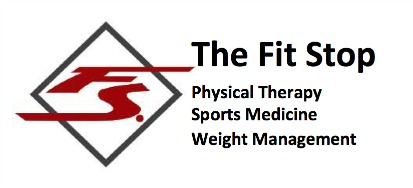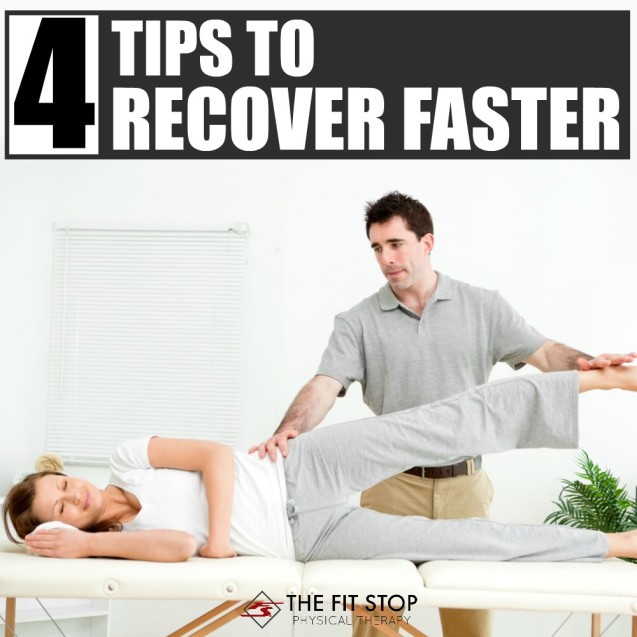Best physical therapy treatment
Four keys to maximize your physical therapy visits to recover faster and more completely!
For over six years now, I have been practicing physical therapy (PT) at the Fit Stop in our Heber City location. I love my job. I think that we as physical therapists have one of the most important and gratifying jobs out there. We are able to play a pivotal role in decreasing pain and improving our patient’s function and quality of life in a very safe and non-invasive way. One of the best aspects of my job is being able to see my patients get better. The majority of musculoskeletal injuries out there respond very well to PT treatment. However, sometimes it doesn’t quite work out that way. Sometimes, a patient does not improve as much as he/she hoped. This can be very frustrating for both therapist and patient, especially since nowadays the cost for care is generally quite expensive for the patient. Most patients have significant deductibles that need to be paid off before their insurance will even pay a dime for the PT. Then, even after the deductible is met, ever increasing co-pays can deter a patient from even seeking care in the first place. Considering these factors alone, it is understandable that a patient could get discouraged if progress with PT is not perceived to be meeting expectations.
So what can be done to give you the best chance possible of reaping maximum benefit from your PT? From my experience over the last few years, successful PT patients generally share a few of the following common characteristics…
- Consistency is Key – This adage applies to many areas of life; most certainly when it comes physical therapy. My patients that make a commitment to the PT plan of care and see it through with consistency definitely get better results more quickly than those who don’t stick with it. Generally the plan will consist of between 2-3 visits over a period of 4-6 weeks, however this frequency can vary depending on the diagnosis and severity of your injury. Usually the frequency will start around 3 visits a week, and then will get gradually tapered off over the following weeks as pain and function improves. The later weeks in the plan are generally focused on strengthening the affected area of the body to help prevent recurrences. My patients that have difficulty keeping the set schedule (travel or other factor affecting consistency) generally don’t see the results they were hoping for.
- Patience – Consistency and patience with physical therapy go hand-in-hand. There are very few issues with the human body that can be fixed up in just one or two treatments, especially when it comes to musculoskeletal pain. Patients that expect a miracle from PT overnight are generally disappointed. Change takes time and that applies to making the needed changes in the human body that will decrease pain and improve function. Improving strength in weak muscles usually takes around six weeks. Likewise improving mobility in a tight joint or tendon also takes weeks. As you start out going to physical therapy, keep in mind that it can take some time and effort to see desired improvements.
- Home Exercise Compliance – Every injury you ever treat with a physical therapist should be accompanied by a Home Exercise Program or HEP. That is just what we do as PTs. Our main objective is to give our patients the tools they need to feel better and avoid future injury down the road. This always requires something to be done outside of the formal PT visits. There are 168 hours in a week; if you’re coming to your PT visits for even 3-4 hours a week you’re actively working on your injury a measly 2% of your week. For the majority of injuries this simply isn’t enough. The HEP facilitates the necessary strength and motion to enable the quickest path to a full and complete recovery.
- Take an active approach – It has actually been shown in formal research that when a physical therapist takes an active approach with a patient who is very proactive with his/her rehab, then that person gets significantly better results from the care. From my experience this is certainly the case, and it makes sense. A lot of the pain most of us deal with nowadays comes on because of too little activity. Americans today just don’t move enough. So, as an example, an active approach means that it is very important as a patient to be willing to move, exercise and stretch. Your therapist will guide you in the performance of these movements so that they are done properly. Patients that take this active approach to care can expect much better results from their PT.
At Fit Stop Physical Therapy, we know that results matter. We work very hard to make sure you get the results that matter to you. Keep these 4 principles in mind and you will enjoy the benefits of improved mobility and decreased pain that can come from the right approach to physical therapy.
Interested in setting up an appointment or discussing your problem with one of our physical therapists? We would love to hear from you! Click on one of the clinics below to be taken to the contact information to that clinic.
Heber City Salt Lake Farmington Murray
Toby Bluth, PT, DPT
Fit Stop Physical Therapy – Heber City
345 West 600 South Suite 200
Heber City, UT 84032
(435) 654-5607


